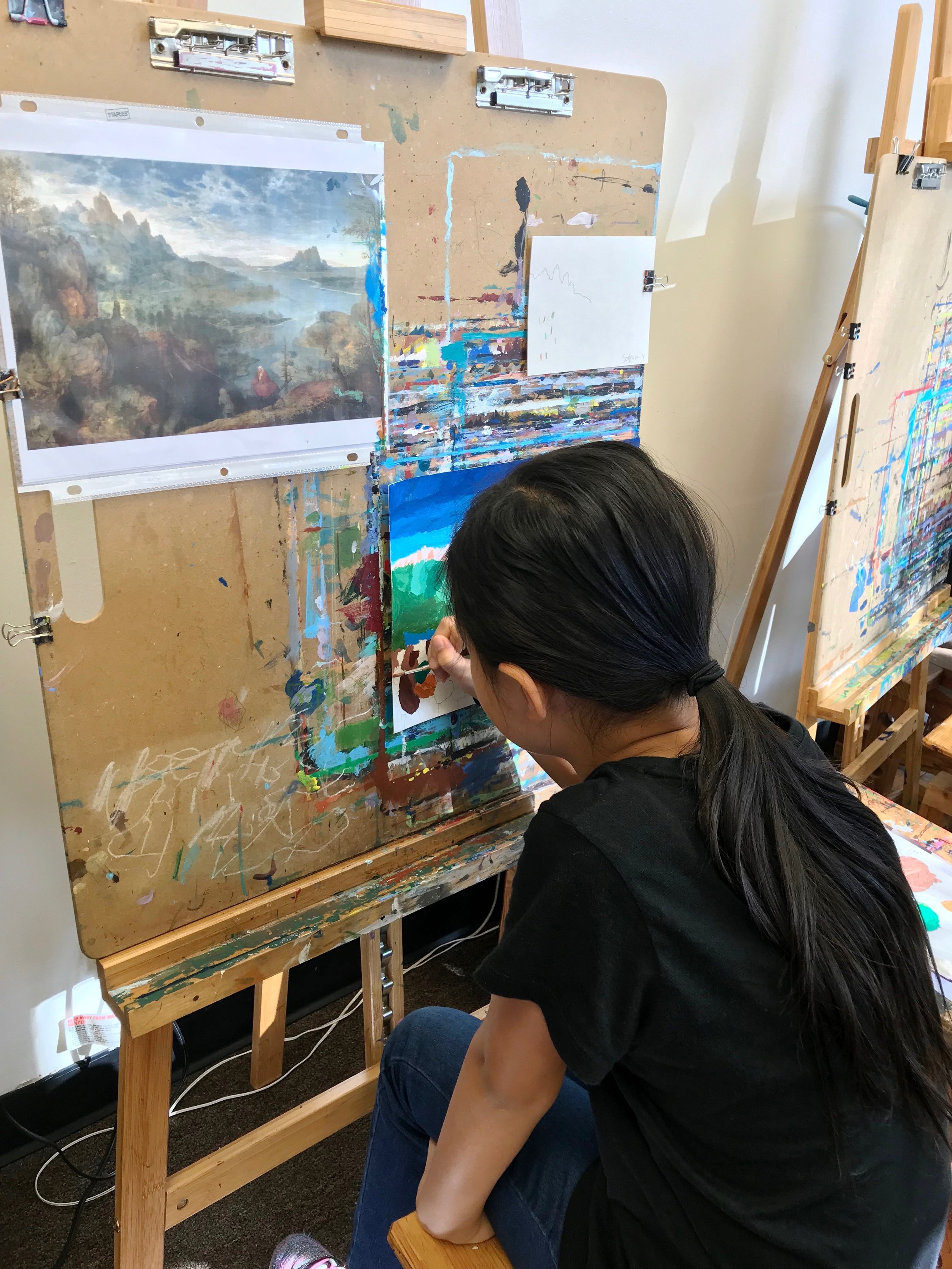The goal of our CREATE: Proportion (Hands) lesson is to create a painting that focuses on hands and shows how hands can change the feeling of the overall painting.
Natalia, age 10
Lana, age 12
Sofia, age 15
Updates
The goal of our CREATE: Proportion (Hands) lesson is to create a painting that focuses on hands and shows how hands can change the feeling of the overall painting.

Natalia, age 10

Lana, age 12

Sofia, age 15
Our unique Curriculum is the perfect foundation of art education. Each student progresses at their own pace and is instructed individually, and each student receives the art education that is just right for them.
They'll learn to draw, paint, blend, shade, mix colors and all the other skills that are fundamentally important in creating beautiful art. We'll teach them to use colored pencils, watercolor, how to blend with oil pastels, and how to mix acrylic paints to create amazing colors. They'll get to try it all here, and with the freedom to choose their materials for their projects.

Draw!

Color!

Blend!

Paint!
To try art/work/place for yourself, schedule an Introductory Lesson! Introductory Lessons may be scheduled during any of our available class times, subject to availability.
This student is creating an image for the EXPLORE: Renaissance lesson of our Curriculum. At this point in the Curriculum, our students have learned many important fundamental skills and are able to create work in a similar manner to those done by the Masters during the Renaissance period.
During this period, artists used perspective to create the illusion of distance and composed their paintings in such a way to guide the viewer's eye around the image slowly and evenly.


VOCABULARY:
Anatomy: a study of the structure or internal workings of the human body
Proportion: the relationship of one thing to another in terms of size
Perspective: the art of drawing solid objects on a two-dimensional surface so as to give the right impression of their height, width, depth and position in relation to each other when viewed from a particular point
Humanism: a Renaissance movement that revived interest in ancient Greek and Roman thought
One of our students, doing a wonderful job of depicting drapery in two dimensions.
GOAL: Do an observational drawing or painting of fabric. Pay close attention to the variations of gradation. There are some areas of strong contrast and other areas of subtle contrast. Depending on how you set up the lighting and arrange the fabric, some edges may be very soft (subtle) and others may be very sharp.

Our OBSERVE lessons in our Curriculum are meant to build skills of observation. Students learn to edit the information in front of them in order to include only the elements necessary for a successful composition.

A finished example by Andrew, age 10
The finished drawing in colored pencil.

Elyse, age 14
Join art/work/place! Our weekly lessons are ongoing so you can begin whenever you like!
We have classes from Tuesdays to Saturdays so you can be sure that we will have a class time that will fit your schedule. Our make up policy is also very flexible, so you won't miss any classes due to conflicting activities.

Are you new to art/work/place? Schedule an Introductory Lesson! Coming back after a short break? Contact us to re-enroll!
We'll see you in class!
Our second session of our Large Canvas Painting Summer Art Intensive is well underway and the paintings are looking great! We were so lucky to be able to use the 30x30 canvasses that Grandma Cheryl so generously donated.


